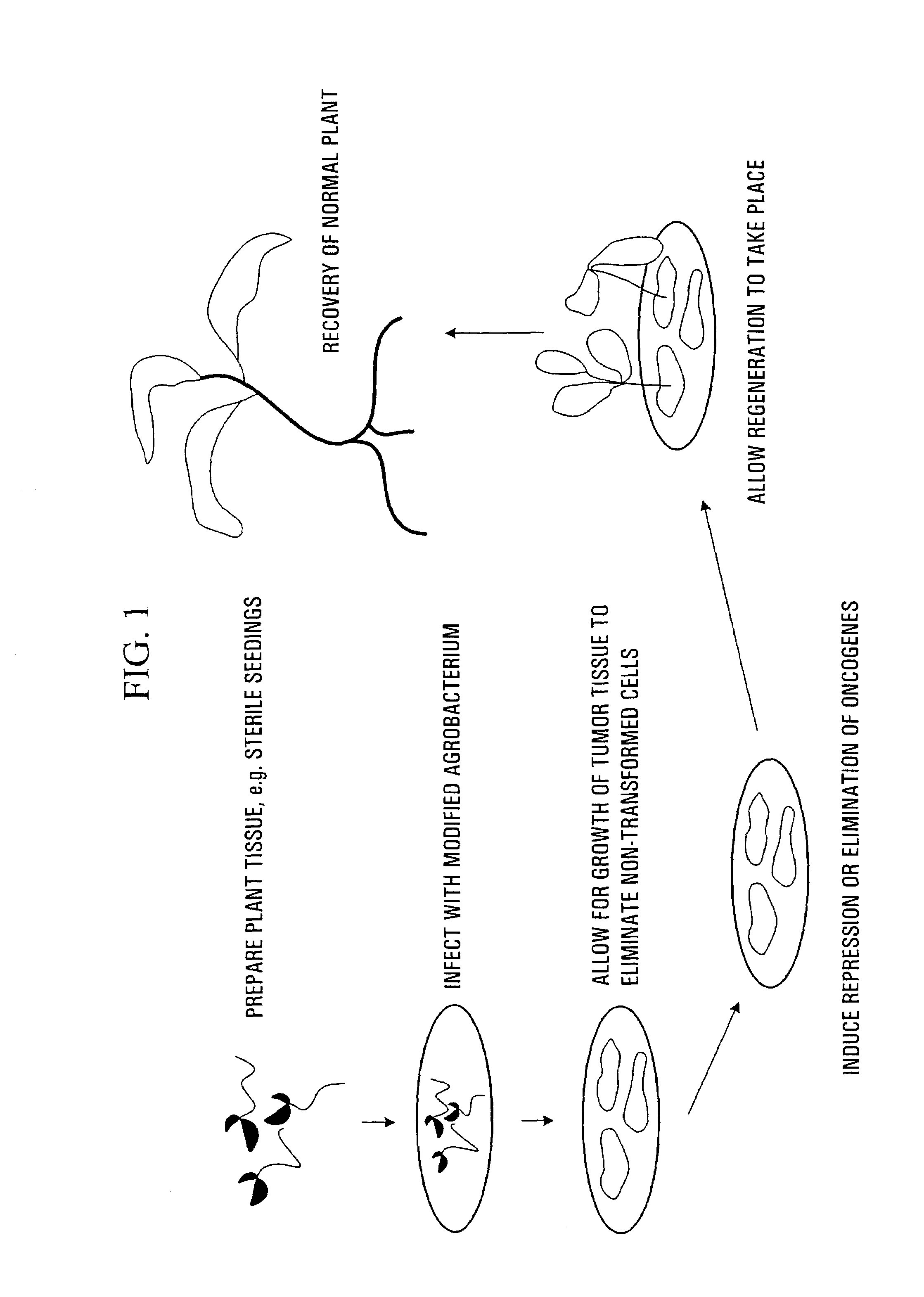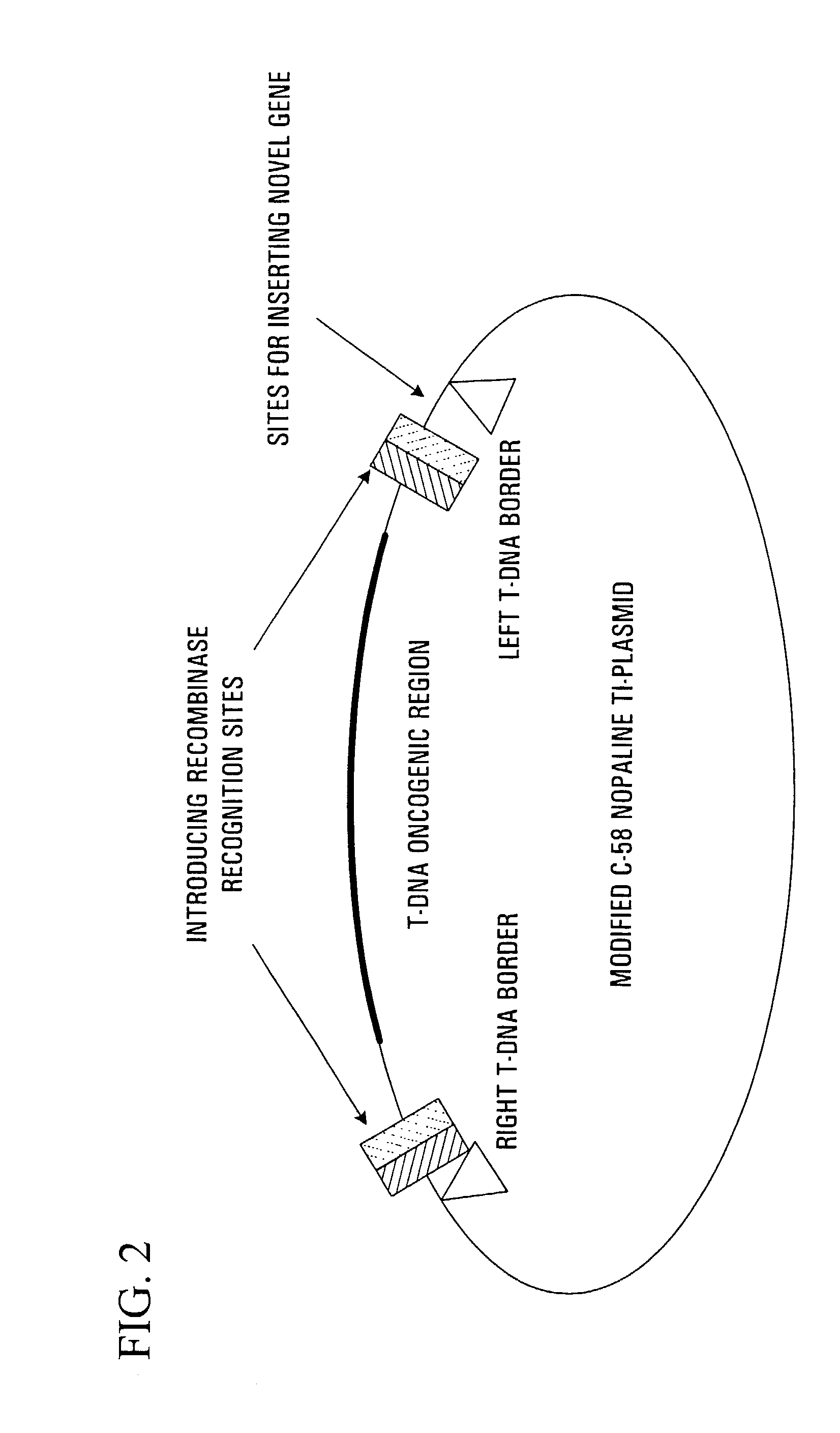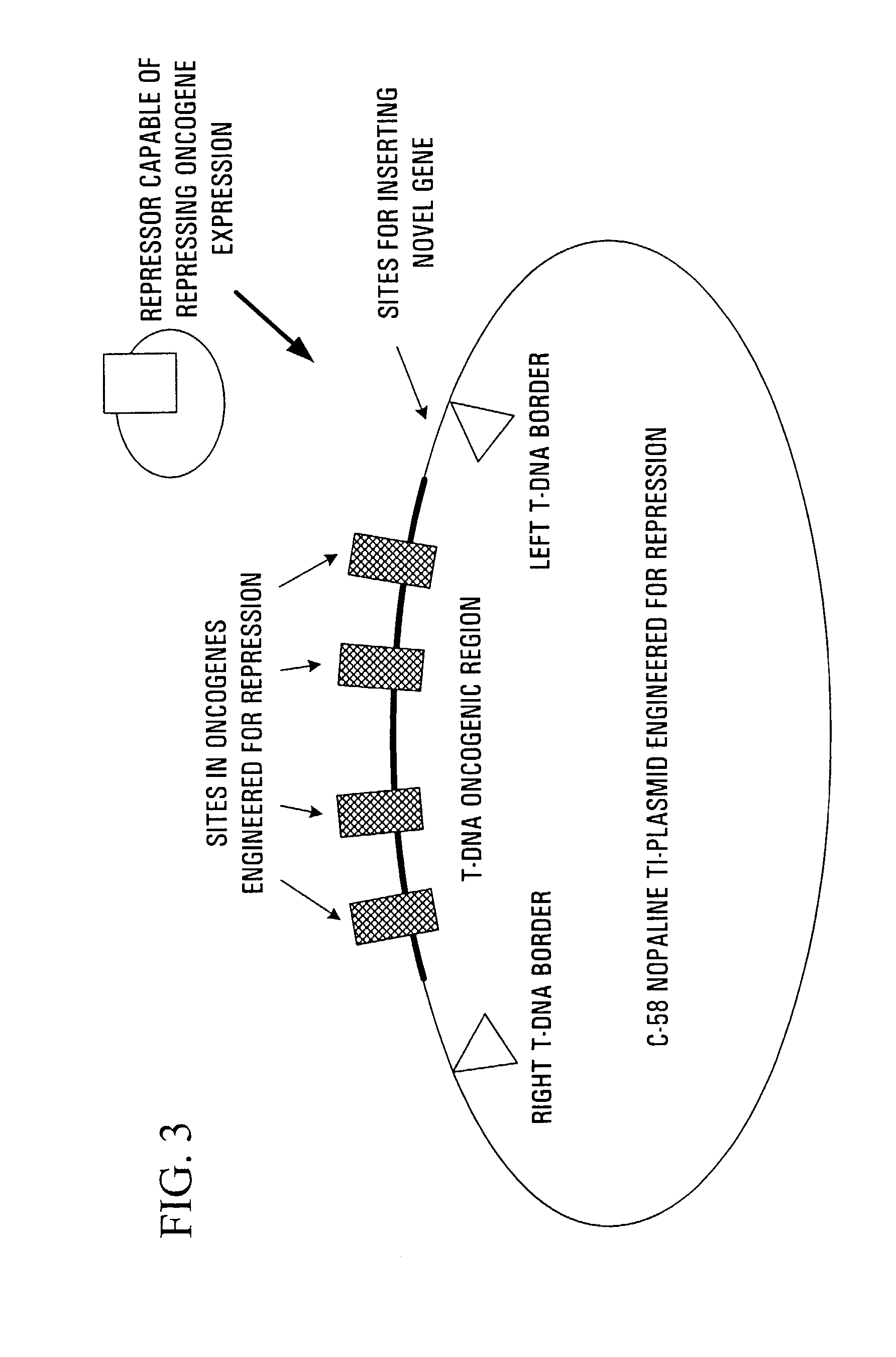Methods and constructs for plant transformation
a plant and construct technology, applied in the field of methods and constructs for plant transformation, can solve problems such as the regenerating of transformed cells, and achieve the effect of convenient identification and efficient and convenien
- Summary
- Abstract
- Description
- Claims
- Application Information
AI Technical Summary
Benefits of technology
Problems solved by technology
Method used
Image
Examples
example 1
[0198]The construction of a modified wild-type Agrobacterium Ti-plasmid is described in the following examples. This example describes the construction of a vector for the introduction of a recombinase site into the right border region of the Ti-plasmid from the wild-type C-58 nopaline Agrobacterium.
[0199]The modification of the Ti-plasmid is carried out by the construction of a vector comprising a recombinase site and regions of homology that permit the introduction of the site by homologous recombination within the Agrobacterium strain. In this example, the vector used in the construction of a wild-type C-58 Ti-plasmid modified to contain, at the right border region, DNA sequences recognized by a site-specific recombinase.
[0200]To modify the Ti-plasmid, a vector named pRBC-1 (Right Border Construct) was constructed for the homologous recombination with a wild-type C-58 Ti-plasmid. A number of cloning steps were employed. The steps employed are outlined in FIGS. 28–33. These steps...
example 2
[0210]This example describes the introduction of the plasmid pRBC-1 into C58 Agrobacterium.
[0211]In this example, the pRBC-1 vector as used to insert a sequence into the Ti-plasmid of the strain C58 by a combination of triparental mating (Rogers et al., Methods Enzymology 118:627–636, 1986) and homologous recombination. In this example, pRBC-1 in the E. coli strain DH5FT was combined with Agrobacterium C58 and a E. coli helper strain HB101 carrying the wide host range plasmid pRK 2013. Cells are plated on minimal media and the Agrobacterium is selected for resistance to the antibiotic carbinicillin, a structurally related analog of ampicillin and rifampicin as well as sensitivity to kanamycin.
[0212]Agrobacterium cells resistant to the appropriate antibiotics are selected and the integrity of the inserted DNA at the right border region is confirmed by PCR and restriction digest analysis. The resultant vector comprises a wild-type C-58 Ti-plasmid modified to contain a DNA sequence re...
example 3
[0217]This example demonstrates use of the strain C58 RBC-1 to produce transformed plant cells.
[0218]The C58 RBC-1 strain of Agrobacterium is used to form tumors on inoculated plants to demonstrate that the modification does not inhibit the oncogenic activity of the Ti-plasmid.
[0219]To form tumors, sterile seedlings of various Brassica (napus, rapa, oleracea and carinata) species and tobacco are inoculated with an overnight cultures of the Agrobacterium strains C58 and C58 RBC-1 by wounding the stem with a sterile needle containing the Agrobacterium. Tumor formation is scored and no difference is observed between the rate of tumor formation with the wild-type and the C58 strain with a modified right border.
PUM
| Property | Measurement | Unit |
|---|---|---|
| Tm | aaaaa | aaaaa |
| temperature | aaaaa | aaaaa |
| temperature | aaaaa | aaaaa |
Abstract
Description
Claims
Application Information
 Login to View More
Login to View More - R&D
- Intellectual Property
- Life Sciences
- Materials
- Tech Scout
- Unparalleled Data Quality
- Higher Quality Content
- 60% Fewer Hallucinations
Browse by: Latest US Patents, China's latest patents, Technical Efficacy Thesaurus, Application Domain, Technology Topic, Popular Technical Reports.
© 2025 PatSnap. All rights reserved.Legal|Privacy policy|Modern Slavery Act Transparency Statement|Sitemap|About US| Contact US: help@patsnap.com



